The Restful Museum
The Restful Museum is my appreciative response to the UK theatre world’s Raquel Meseguer‘s unassuming yet electrifying presentation Dreams of Resting Spaces given at Communicating The Museum Brussels.
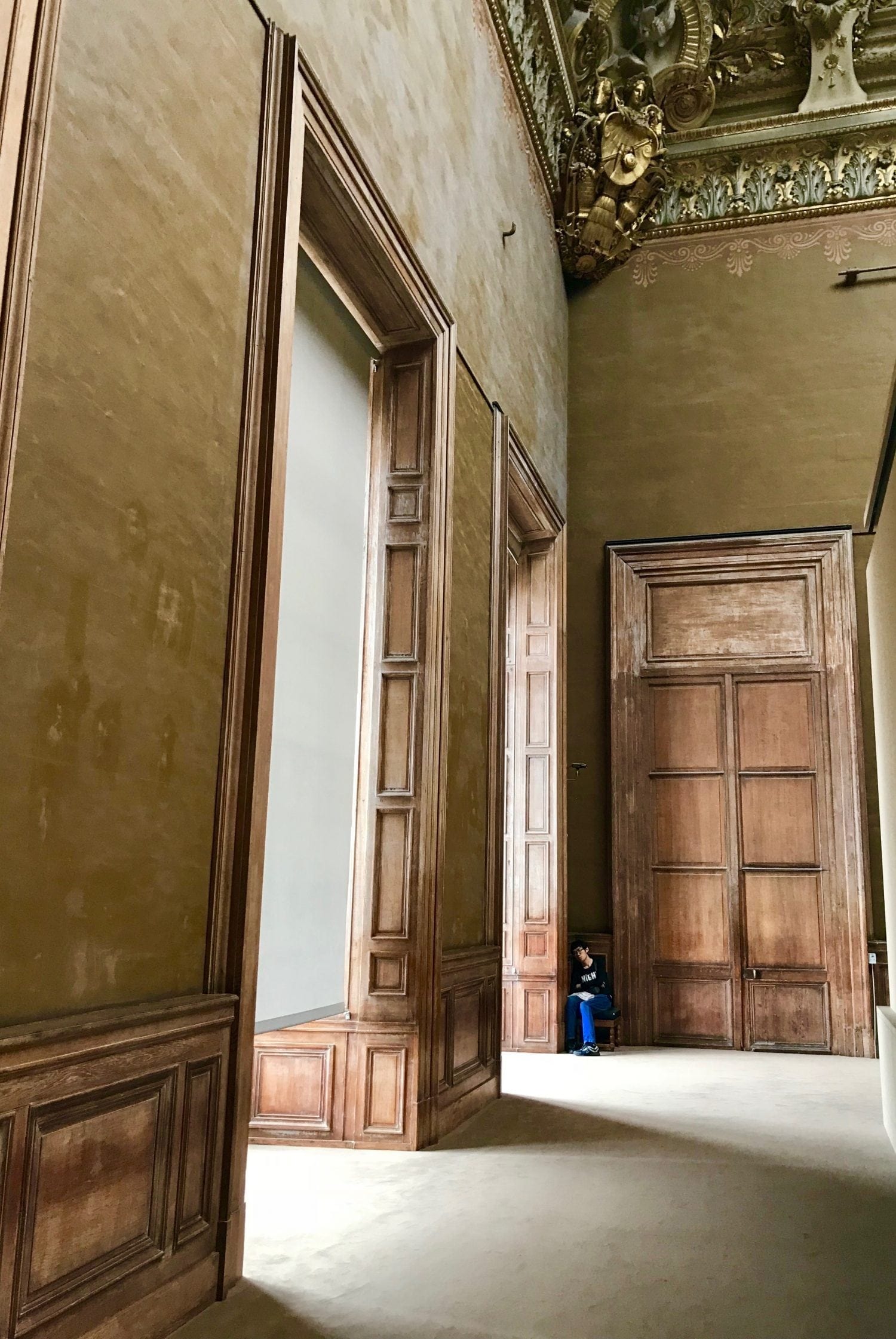 I am what you might call a museum marathoner. This past weekend, for example, I spent 8 hours in the Louvre without a break for food and hardly for anything else. It was an uninterrupted fine art binge.
I am what you might call a museum marathoner. This past weekend, for example, I spent 8 hours in the Louvre without a break for food and hardly for anything else. It was an uninterrupted fine art binge.
I’m probably not normal and I certainly would not have been allowed to behave that way had I not been entirely on my own. Art stamina—if that’s what to call it—is something one builds over a lifetime of practice. What Raquel pointed out to me though is the simple fact that the art experience in a museum does not have to be this way. A museum does not need to insist that you demonstrate your endurance. And yet most museums, with a typical shortage of chairs and sofas in the galleries, effectively demand exactly that.
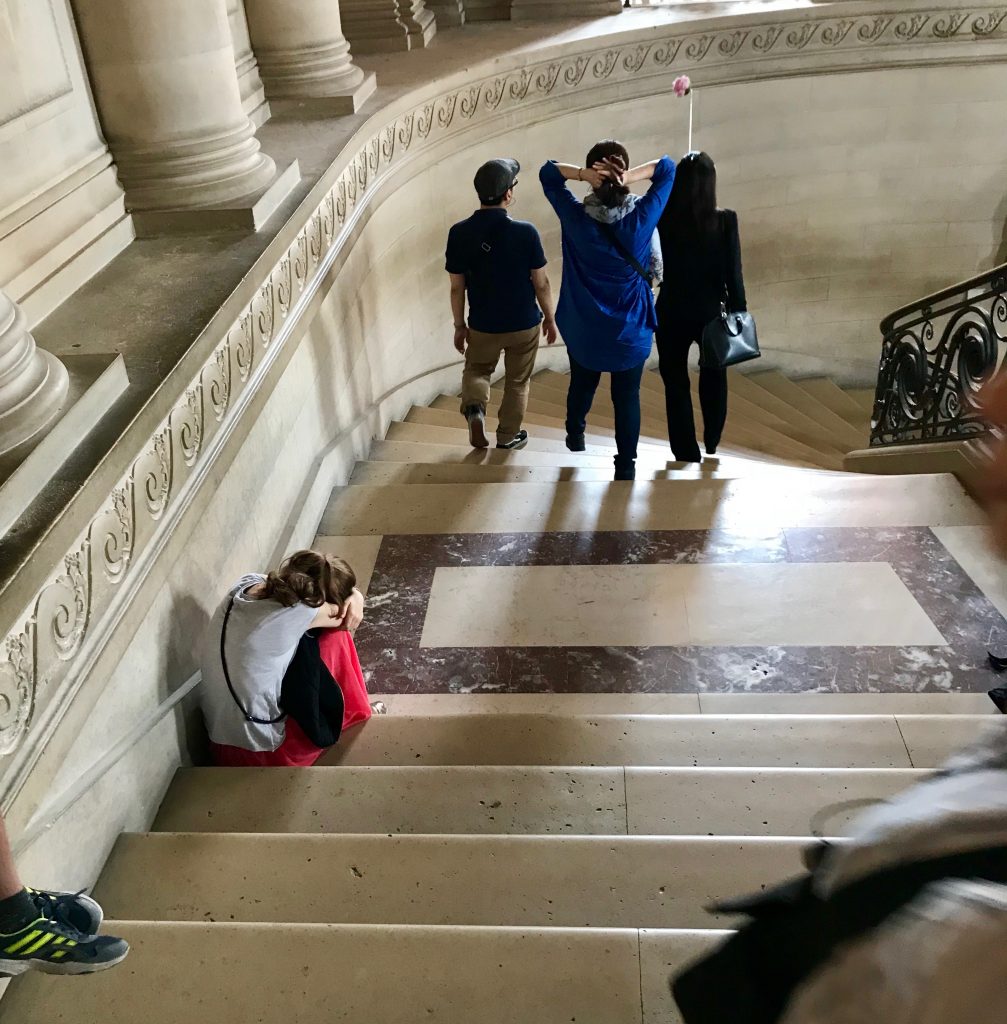
It is almost as if museums were designed with the idea of me—the marathoner—in mind and not really anyone else.
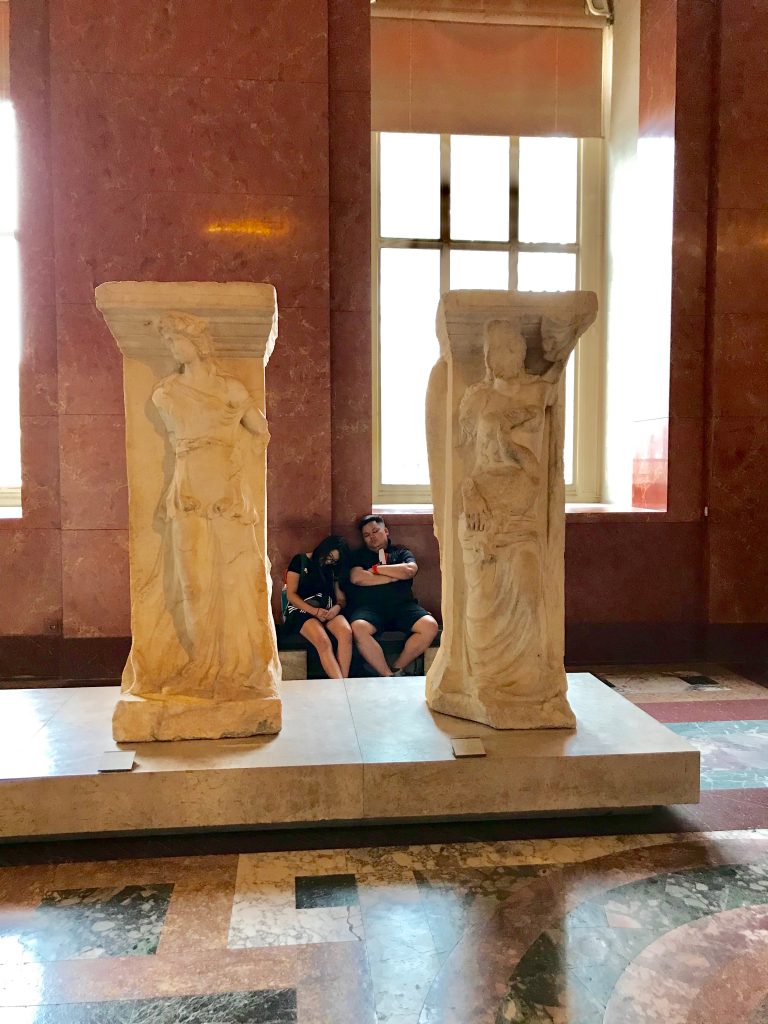
The Restful Museum
Should we not find in museums—especially art museums—a place of respite, rejuvenation, mystery, contemplation, and inspiration? These are all things that are possible at museums, of course, even if nothing were changed, but the idea of the restful museum could be far more actively provided for.
Raquel, who suffers from chronic pain—an invisible disability—needs to lie down often, not sit down, but lie down, prone, in order to recover her equilibrium and go on. This need severely limits her capacity to enjoy a typical museum. What was revelatory for me in hearing Raquel’s thoughts and her recommendations to encourage people to lie down, put art on the ceilings, and think about how to slow people down instead of speed them up, is how beneficial these changes would be not just for Raquel or others with disabilities, but for everyone—the elderly, the young, the expecting or new moms, the exhausted, even the marathoner like me!
I was telling Raquel’s story to a friend who works at an art museum, and she said, “Oh yeah, I can’t be in a museum for more than an hour or two before I have to go elsewhere so I can relax. It’s too exhausting. Sometimes I don’t even try, because I cannot stand up for that long.” She’s in her forties, healthy, and an art lover! We are turning her away or at best making her think twice about walking through our door.
Do we need to hurry?
I realize that there are situations when an institution is interested in moving volume. Obviously the Louvre should not put couches in front of the Mona Lisa. But most museums have ample space where there are rarely crowds and where there would be no harm in showing people that it is OK to slow down and linger. Wouldn’t this allow us all to have a richer experience? Is it not better if I, as a visitor, am encouraged to spend 20 minutes with a work of art instead of 20 seconds? It’s a simple idea really: make it easier to rest with art. Make is easier to sit or to lie down. Make it easier to just be there and take it all in.
Here’s to the pausers, the wanderers, the lingerers, the slow. Here’s to the readers of texts, the thinkers of thoughts, the starers, and the close examiners. Let us celebrate the idea of looking at an artwork for longer, of sharing time with it, and of seeing it from different perspectives, even from the floor.
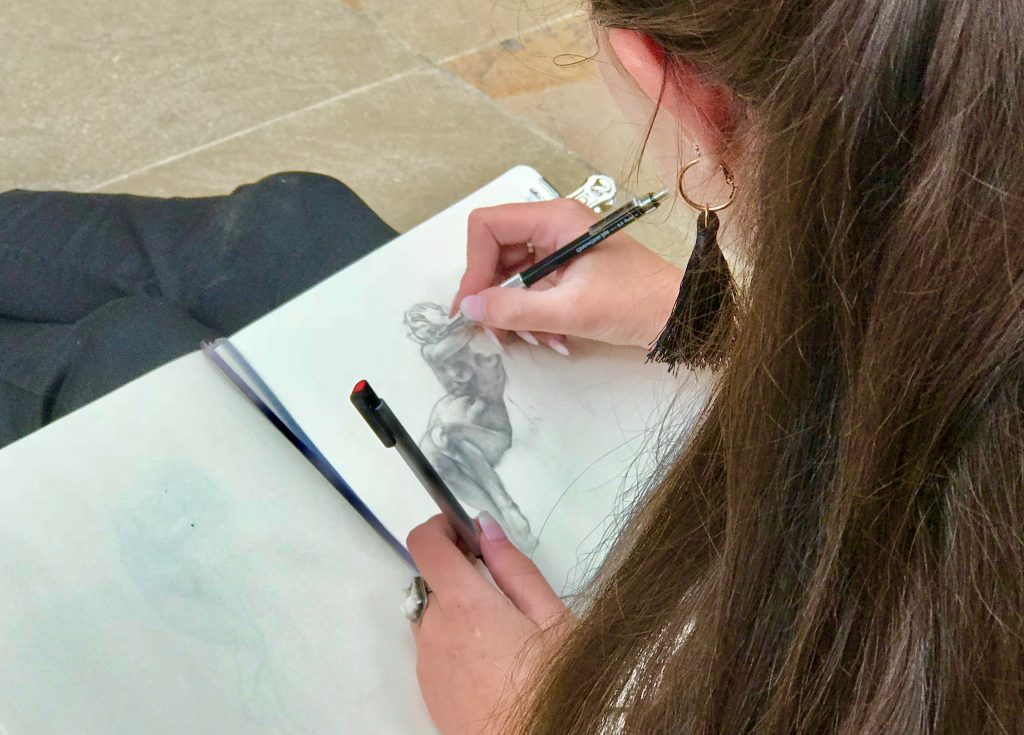
Why not?
The changes an institution might need to make are actually quite minor: more comfortable chairs, more sofas, no policy that says you cannot lie down or close your eyes. What would it take to make this the norm, instead of the exception, and what would we gain from doing this? Raquel showed us all last week that the benefits of doing this are not minor at all.
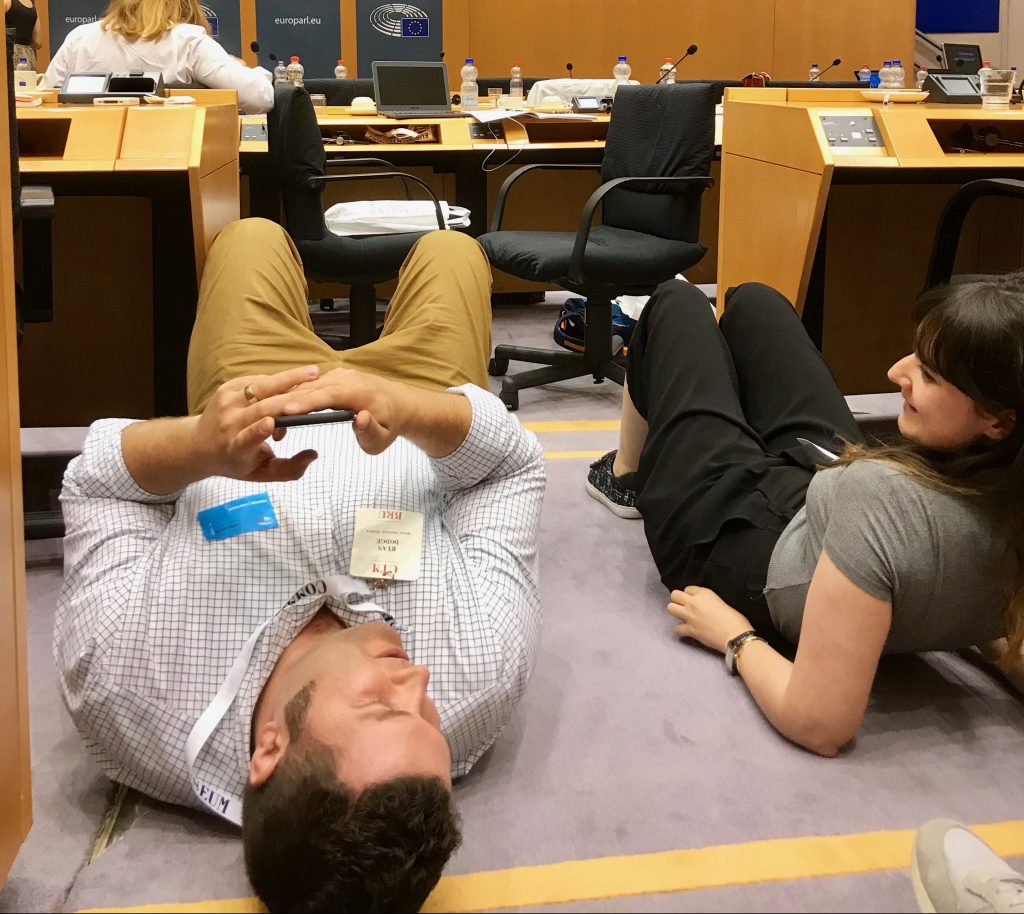
All photos by the author at the Louvre, Musée d’Orsay, and for the last at the European Parliament as the CTMers lie on the floor after Raquel’s presentation. Painting is a detail of Jules Bastien-Lepage’s Les Foins [Hay Making] from Musée d’Orsay.
___
Watch James Heaton engage a team at the Tenement Museum in New York City with the question, “What is a brand?”
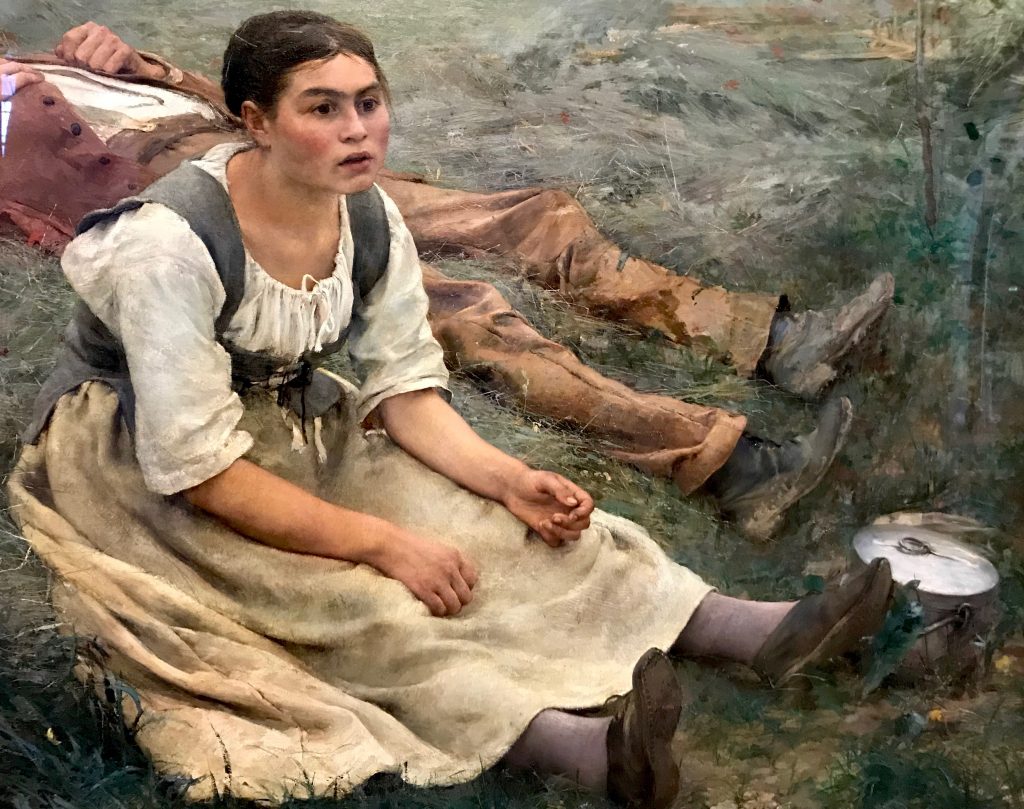
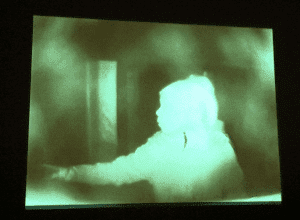

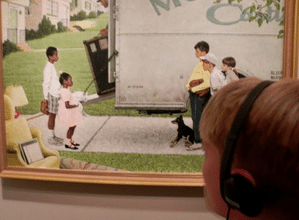
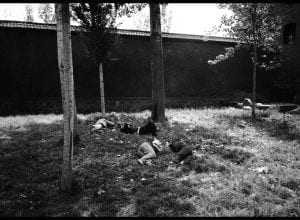
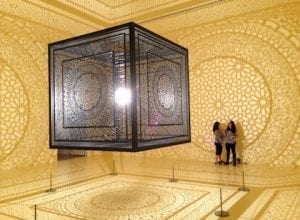

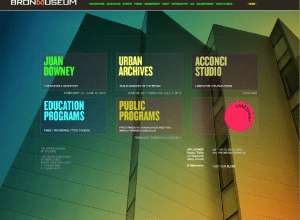

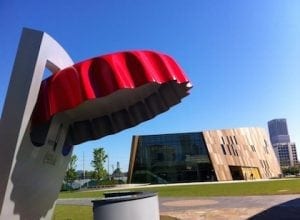

James, you’re the only person I know who’d stay in a museum for eight hours straight with no food! I could easily go eight without food but being in a museum makes me feel like I need to recharge and eat. Maybe good business for their cafes or nearby restaurants though?
There is certainly a benefit to herding people in and out in museums that are at capacity or have limited space. I remember when the Rain Room exhibition came to MoMA and I stood in line for for 7-8 hours and for what? A maximum stay of 10 minutes or whatever the suggested time limit was inside the room! The time spent waiting in line with friends, reading and chatting, and the fact that there was a time when I could afford to do nothing and just stand in line for the entire day without feeling guilty, was a more memorable part of the experience than the exhibition itself. I guess that was the resting part of the museum experience.
And one more thing, I went to the Huntington Library & Gardens twice in the past month and I was thinking that it’s really nice that it’s both museum/library and a garden because you can go look at the galleries if you want or if you’re tired, nap and lie down in the field as many were, though I don’t know if it’s encouraged. It never occurred to me though that you can have that garden-like space inside the museum … going to the museum to recharge when you are tired. Such a simple idea but a game-changer!
I also could definitely not spend 8 hours in a museum with no breaks. But this is a great post. It’s very telling that I’ve heard people use “museum back” as a generic term for when you’re tired and your back and shoulders are sore from standing up for too long. It’s a shame that so many museums have such extraordinary spaces but do not encourage people to relax and linger and soak them in.
To me this is especially true given the ever-increasing admission prices you see museums charging. If the Met wants to charge you $25 unless you have a New York ID, the least they can do is make it more comfortable to spend more than a couple of hours there. And for museums that are free, efforts at “restfulness” would go a long way in making them viable “third places.”
As a side note, I was recently at Dia:Beacon and stumbled into a room with these huge fluffy couch-type things. I was surprised but delighted to see people sprawled out on them chatting quietly and napping. They are a piece from 1979 by John Chamberlain (https://www.diaart.org/collection/collection/chamberlain-john-american-barge-1979-1980-602/on-view/on/page/4). It felt almost transgressive at first but we spent a nice 20 minutes of contemplation and rejuvenation before continuing anew. It was a perfect interlude to the visit.
This reminds me of an exhibit MoMA PS1 once had with a pile of bean bags. It was really nice to be able to lounge there and linger. (I think it was this: http://cargocollective.com/florakatz/Korakrit-Arunanondchai-MoMA-PS1).
And regarding the $25 admission fee common at museums — I think that can be a factor in why some may feel that they can’t just sit around, even if there were plenty of sofas. At least for me, I’m thinking that I didn’t pay twenty-five bucks to sit around and I feel like I should get my money’s worth and learn something, experience something, especially if I’m there by myself. And rest had not occurred to me to be an acceptable experience to take away from a museum thus far …
Resting places in museums! It’s so obvious! I wonder why this isn’t discussed more often, why we take it for granted that museums are just these intense 1-2 hour excursions that leave you exhausted. Is it simply a lack of imagination? Or is there a high-art snob factor that plays into this, where people don’t venture to question the way things are?
Meanwhile, other than sleep, I don’t know if there’s anything I can do for 8 hours straight!
James,
Perhaps even high-quality and museum-branded 3-panel folded cushions could be issued at the entrance. These would be very similar to what we used to take naps on in kindergarten. When a piece was encountered that one wished to study in depth, just unfold and behold! At least we have provided a soft warm alternative to a hard, cold marble floor.
Keep smilin’ buddy,
Kregg
Kregg, What a great idea! This progresses from permission, “It’s ok to lie down.” to active invitation, “Please lie down and here is a convenient tool for doing so.” This is important to consider and such a stance would certainly serve as an important differentiator for an institution that chooses to adopt it.
In Raquel’s presentation the following question is posed in a visitor survey: Take a moment to think about a local arts centre that you visit or would like to visit. What would make the artwork truly accessible to you? (e.g., performance, exhibition, film) Please tick the statements that apply. Among all the answers, the one with the highest score was “A clear invitation to rest or lie down.” It came in at 69.59%! That’s certainly food for restful contemplation.
James, my #1 complaint in museums is no place to sit — even perched — much less rest. I spend a LOT of time in museums. My ideal “holiday” (no holiday at all, given my line of work) is 3 days = 8 museums. The first thing I notice is no place to rest.
In spite of how many times this complaint has been voiced by “the public” and the solution advised to the client. What will it take to get through? I think it’s an unintended consequence of the intense focus on the art/content at the expense of the human needs of the visitor. When we as a field transition to a “visitor first” gestalt, we may make some progress on making museums restful — and healing — places.
Adding to the challenges inherent in all museums, a compounding factor is that many people visit the world’s greatest (and largest) museums while on vacation — meaning they may already be suffering from jet lag or unaccustomed wear on the legs.
I can almost hear the horrified gasps of art conservators when you talk about hanging art on the ceiling, but I guess that’s part of brainstorming.
Is it possible that the rush isn’t the museum, but the rest of the world intruding on our psyche? We rush because we’ve lost our ability to relax properly and enjoy these spaces. In America the idea that idle time is waste remains strongly entrenched, and it’s a competition for resources. Time is the only real commodity. We’ve entangled concepts like time with money and the alienating objects of consumerism. When you consume a museum you don’t actually take home anything physical, and on top of the admission cost in real dollars you are spending your time.